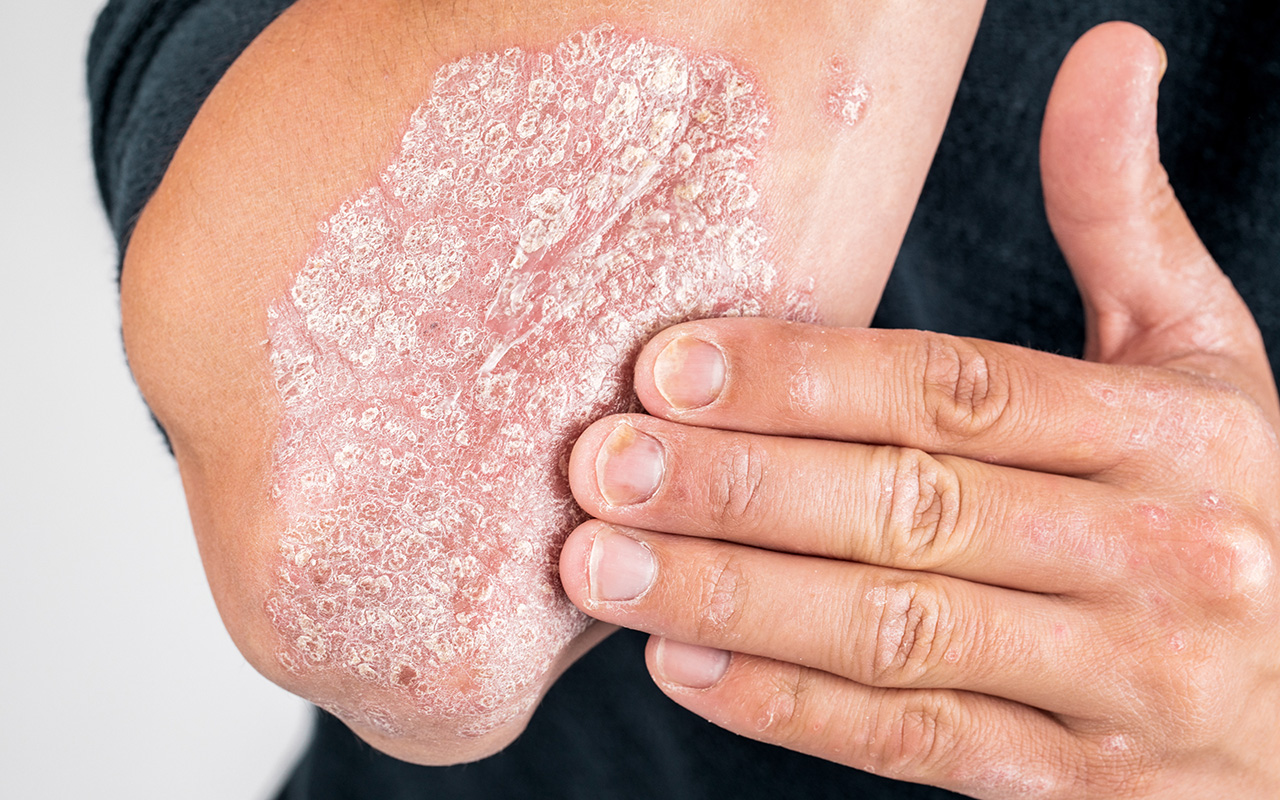THERE’S much more to psoriasis than meets the eye, according to experts who say it is essential that clinicians look beyond the skin condition and be alert to the many comorbidities associated with this chronic inflammatory disease.
A Narrative Review published in the MJA has highlighted the many comorbidities that may be associated with psoriasis, including psoriatic arthritis, cardiovascular disease, obesity, insulin resistance, mental health disorders, certain types of malignancy, inflammatory bowel disease and other immune-related disorders, and hepatic and renal disease.
Lead author Dr Tom Kovitwanichkanont said in an exclusive InSight+ podcast that the three comorbidities that should be top of mind for primary care clinicians were psoriatic arthritis, cardiovascular disease, and the psychosocial impacts of psoriasis.
“Arthritis and the psychological impacts are really the main drivers for morbidities in psoriasis, whereas cardiovascular disease is the leading cause of mortality in patients with psoriasis,” he said.
Co-author Professor Peter Foley, clinical dermatologist and Associate Professor at the University of Melbourne, said while psoriasis was often labelled as “just a skin disease”, it was in fact an immune-mediated disease.
“The systemic immune system is overactive, particularly in the skin,” he said.
Professor Foley, who is also a Fellow of the Australasian College of Dermatologists, said a diagnosis of psoriasis should raise suspicion of a dysfunctional immune system that might drive disease in other parts of the body, and reduce the threshold for primary care physicians to assess blood pressure, as well as lipid and glucose levels.
“Psoriasis and cardiovascular disease are dynamic inflammatory processes and the cytokines, the elements of the immune system involved with cardiovascular disease, are remarkably similar to the elements that are involved with psoriasis. Probably some mental health issues are driven by the immune system as well.”
Professor Peter Nash, Professor at Griffith University and Director, Rheumatology Research Unit, said psoriasis was becoming more commonly known as “psoriatic disease”, in recognition of its multisystem impact.
“Psoriatic disease has many manifestations: metabolic syndrome, fatty liver, inflammation that drives premature atherosclerosis, the mental effects, five types of joint disease, as well as the skin and nail disease. So, we are tending towards that more multisystem, comprehensive, holistic kind of attitude toward the condition,” Professor Nash told InSight+.
Professor Nash said psoriatic arthritis, in particular, remained underdiagnosed in general practice.
“It’s what I call a ‘penny-drop diagnosis’,” he said. “A GP may know that a patient has skin disease and they also have lots of aches and pains, but because it’s seronegative for rheumatoid factor, because the ESR [erythrocyte sedimentation rate] and CRP [C-reactive protein] are normal in up to 50% of patients, because a lot of the pain is from enthesitis as much as arthritis, many people are told that they have osteoarthritis.
Professor Nash said patients may also have been sent to orthopaedic surgeons before the “penny drops” that more than one joint is involved, and the patient also has skin disease.
“That’s when clinicians start to realise that it’s an inflammatory condition rather than an immediately surgical one,” he said.
Professor Foley agreed that psoriatic arthritis was one of the most overlooked comorbidities.
“It is always easy to overlook joint symptoms,” he said. “If people are focused on their skin – they may dismiss back stiffness, or aches and pains, as just part of getting older. But these symptoms may be inflammatory in nature.”
The MJA authors noted that between 6% and 41% of people with psoriasis will also have psoriatic arthritis.
Professor Nash said the presence of psoriatic nail dystrophy was a “key giveaway” that a patient may also have psoriatic arthritis. The MJA authors noted that psoriatic nail dystrophy had been found to correlate with an almost threefold increase in risk of joint disease.
Early detection of psoriatic arthritis was also crucial to management, Professor Nash said.
“Even a 6-month delay has been shown to be associated with worse outcomes so there is a window of opportunity to be aggressive with therapy early,” he said, pointing to Irish research also cited in the Narrative Review.
It was also important, Professor Foley said, to recognise the impact that psoriasis could have on patients’ quality of life.
“As soon as you sit down with a patient with psoriasis, they start telling you stories about how the visible signs have impacted upon them. It may have affected their employment in the hospitality or retail space, or they’ve had the experience of someone recoiling when they see these red, scaly patches,” he said.
Professor Nash said the acronym SWABLD – Smoking; Weight; Alcohol excess; Blood pressure; Liver disease, usually fatty liver; Drugs and depression – could be used to raise awareness of the many factors that should be addressed in patients with psoriasis.
Professor Nash said GPs could make a big difference in the long-term outcomes experienced by patients with psoriasis by paying close attention to these issues.
“Their management doesn’t require expensive MRIs or PET Scans, but good general medical care,” he said.
He also said there was a “plethora of fantastic new treatments” available for psoriasis.
“TNF-a [tumour necrosis factor‐a] inhibitors, [interleukin (IL)-17] inhibitors, IL-23 inhibitors, IL-12-23 inhibitors, Janus kinase (JAK) inhibitors, there are many new therapies available, and reimbursed on the [Pharmaceutical Benefits Scheme], for patients these days.”
Professor Foley said these new therapies were extremely effective and 40–50% of patients with severe psoriasis would achieve complete clearance of the skin condition.
“We have some very effective therapies available now without any compromise on safety.”

 more_vert
more_vert